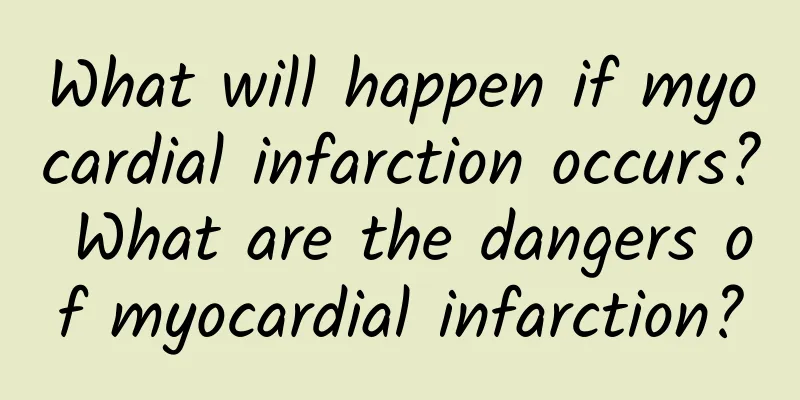What will happen if myocardial infarction occurs? What are the dangers of myocardial infarction?

|
Myocardial infarction is a disease that has many harmful effects. It can cause heart rupture, ventricular aneurysm, mural thrombosis, acute pericarditis, cardiogenic shock, and if the condition is serious, it can even cause the patient to lose his life. 1. Heart rupture : accounts for about 3% to 13% of fatal cases, often occurring after myocardial infarction It often occurs in the lower 1/3 of the anterior wall of the left ventricle within 1 to 2 weeks. The reason is that the infarct focus loses its elasticity, myocardial necrosis, and enzymatic dissolution caused by the release of hydrolases by neutrophils and monocytes leads to rupture of the heart wall, and the blood in the ventricles enters the pericardium, causing pericardial tamponade and causing sudden death. In addition, if the ventricular septum ruptures, blood from the left ventricle flows into the right ventricle, which can cause right heart failure. Rupture of the left ventricular papillary muscles can cause acute mitral regurgitation and lead to acute left heart failure. 2. Ventricular aneurysm : accounts for about 10% to 38% of infarction cases. It may occur in the early stages of infarction or in the healing phase when the infarct lesion has become fibrotic. Ventricular aneurysm is formed by the localized outward bulging of infarcted myocardium or scar tissue under the action of intraventricular pressure. Ventricular aneurysm may be followed by mural thrombus, arrhythmia and heart failure. 3. Mural thrombosis: more common in the left ventricle. Thrombosis is induced due to the roughness of the endothelium in the infarcted area, the vortex in the ventricular aneurysm and during ventricular fibrillation. Smaller thrombi may become organized, but most thrombi break off due to cardiac contraction and cause embolism in the arterial system. 4. Acute pericarditis: transmural infarction, serous or serous fibrinous pericarditis often occurs after myocardial infarction. It accounts for about 15% of myocardial infarctions and often occurs 2 to 4 days after MI. 5. Arrhythmia: accounts for about 75% to 95% of myocardial infarction. Myocardial infarction affects the conduction system, causing conduction disorders, some of which can lead to cardiac arrest and sudden death. Loss of myocardial contractility in the infarcted area causes left heart, right heart or total heart failure, which is a common cause of death in patients, accounting for about 60% of myocardial infarction. 6. Cardiogenic shock : accounts for about 10% to 20% of myocardial infarction. When the myocardial infarction area is >40%, the myocardial contractility is extremely weakened and the cardiac output is significantly reduced, which can cause cardiogenic shock and lead to the patient's death. |
<<: What causes myocardial infarction? Causes of Myocardial Infarction
>>: What causes tinea versicolor? Causes of tinea versicolor
Recommend
What meridian is on the inside of the knee?
The knee is a very important part of the human bo...
What are the acupoint massage techniques in traditional Chinese medicine?
There are many acupoints in the human body. Peopl...
Granulation on the back of tongue
I believe many people have experienced the growth...
What are the important ways to lose weight?
Obesity is a terrible disease. Obesity will bring...
The role and efficacy of white Poria
Maybe you have seen white Poria cocos, or maybe y...
Causes of oily hair
There are many reasons for excessive oiliness in ...
Does rarely catching a cold mean good health?
In daily life, there are often people who boastfu...
How long should the Sanfu plaster be applied to treat winter diseases in summer?
Traditional Chinese medicine is very extensive an...
How much is a pound of 10-year-old tangerine peel?
Poria cocos is the dried intact outer peel of the...
Symptoms of thrombocytopenia, early treatment
Thrombocytopenia needs timely treatment. If it be...
How to regulate Qi and Yin deficiency? Chinese medicine recommends dietary regulation
Qi deficiency and Yin deficiency are both terms i...
Less stool, wet stool, and constant farting
In life, many people have experienced times when t...
The efficacy and function of Bazhen Yimu Tablets
Bazhen Yimu Tablets is a traditional Chinese medi...
Where is the fontanelle?
After a baby is born, many parents will find that...
What herbs can remove stones?
Although modern medical technology has made it po...









